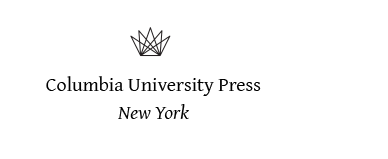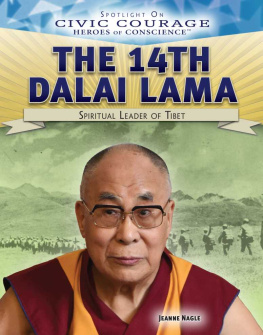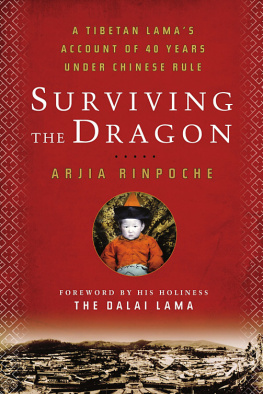Theos Bernard, the White Lama
T HEOS BERNARD, THE WHITE LAMA
Tibet, Yoga, and American Religious Life
PAUL G. HACKETT

Columbia University Press
Publishers Since 1893
New York Chichester, West Sussex
cup.columbia.edu
Copyright 2012 Columbia University Press
All rights reserved
E-ISBN 978-0-231-53037-8
Library of Congress Cataloging-in-Publication Data
Hackett, Paul G.
Theos Bernard, the White Lama : Tibet, yoga, and American religious life /
Paul G. Hackett.
p. cm.
Includes bibliographical references and index.
ISBN 978-0-231-15886-2 (cloth : alk. paper) ISBN 978-0-231-53037-8 (electronic) 1. Bernard, Theos, b. 1908. 2. YogisUnited StatesBiography. 3. ScholarsUnited StatesBiography. 4. United StatesReligion1901-1945. I. Bernard, Theos, b. 1908.
II. Title.
B132.Y6H24 2012
294.3923092dc22
[B]
2011011638
A Columbia University Press E-book.
CUP would be pleased to hear about your reading experience with this e-book at .
References to Internet Web sites (URLs) were accurate at the time of writing.
Neither the author nor Columbia University Press is responsible for URLs that may have expired or changed since the manuscript was prepared.
To Theos Bernard
... and all those whose religious vision exceeded their grasp
CONTENTS
ONE
Life in the Desert
TWO
New York and New Mexico
THREE
Two Parallel Paths (I)
FOUR
Two Parallel Paths (II)
FIVE
On Holy Ground
SIX
Pretense and Pretext: Studies in India
SEVEN
A Well-Trodden Path: Studies in Darjeeling and Sikkim
EIGHT
Tibet, Tantrikas, and the Hero of Chaksam Ferry
NINE
The Clipper Ship of the Imagination
TEN
Yoga on Fifth Avenue
ELEVEN
Tibetland and the Penthouse of the Gods
TWELVE
To Climb the Highest Mountains
THIRTEEN
The Aftermath
FOURTEEN
Postscript: The View from Ki, Sixty Years Later
How few ever think that there will be one around to check up on them.
Theos Bernard
BEFORE HE HAD EVEN SET FOOT on his home soil in the fall of 1937, Theos Bernard declared to a reporter for Londons Daily Mail, I am the first White Lamathe first Westerner ever to live as priest in a Tibetan monastery, the first man from the outside world to be initiated into Buddhists mysteries hidden even from many native lamas themselves.
Over the weeks and months that followed, Theoss account of his life and the events that befell him in Tibet would grow greater and greater in proportion, coming to nearly obliterate any trace of his actual activities. By March of the following year, having called in a few favors back home, he arranged an alumnus lecture at the University of Arizona, and arriving in Tucson, he pulled out all the stops.
When the curtains parted before a packed house, all in attendance saw Theos Bernard, religion scholar, explorer, and mystic, seated in a chair on a dais in the middle of the stage, next to a movie projector and surrounded by ritual artifacts and Tibetan robes. Come with me, he invited the audience, in a flight in the Clipper Ship of the imagination from San Francisco across the vast Pacific... into the heart of Asia, the Land of the LamaTibet! and with a carefully practiced grandiose style, Theos Bernard, the White Lama, unfolded his story, explaining how he had fulfilled an ancient Tibetan prophecy and become the first white man ever to live in the lamaseries and cities of Tibet... initiated into the age-old religious rites of Tibetan Buddhism [and]... accepted by the Tibetans as one of themor so he claimed.
As the evening progressed, Theos provided even more details of his recognition by the Tibetans as a reincarnation of the eighth-century master Padmasambhava. He told of his dark retreat in the dungeons of the Potala Palace where midway through his internment, Buddhist monks descending into the black depths of those catacombs were astonished to find him bathed in a white light where none could possibly exist, thereby confirming his fulfillment of the prophecy of the coming of the white lama, a man who would herald and bring about the spread of the truths of Buddhism to the Western world.
With each of Theoss descriptions, the assembled audience was held rapt with attention to every detail. His old grade school principal, Mary Pricewho had made the journey from Tombstone to Tucson to hear him speakrecounted that throughout his lecture, Theos walked in his robes through the aisles of the auditorium that was absolutely quiet except for Theos talking and the sound of your neighbor breathing. It was the most emotionally packed thing and best talk she had ever heard in her lifeso emotional, she recalled, that Theos was a long time coming down from the stage, surrounded by many people, including four or five of his old law school professors.
After the evening had wound to a close, Theos joined his mother, brothers, and Mary Price for the long drive back to his old home of Tombstone. As the car traveled along the dusty road south toward the Mexican border, Mary asked Theos, privately, if what he had said on stage was actually true. Every word, was his response.
While Theos Bernard had gone to Tibet, had met various lamas, and had participated in rituals there, beyond those simple facts, little more of what he said on that spring evening, or afterward, had the slightest ring of truth to it. Nonetheless, from the practical standpoint of what he was attempting to accomplish, that lecture in Arizona was a success. Theos received endorsements sufficient enough to secure a contract for a major lecture tour from a public relations firm in New York, and while the details were being arranged, returned to California to spend time with his father, Glen. There, with Glens help, he began to refine a public persona that would capitalize on the prevailing moods and interests in 1930s America and to no small degree, establish a personal mythology that would serve as a foundation for his life in the years to come.
What actually happened to Theos Bernard over his forty years can only be pieced together from the fragments left in his wake when he disappeared in the fall of 1947. Over the months and years that followed, his friends and family would struggle to make sense of his life as well as their own role in it, some with greater or lesser successeven passing on this obligation to others. The end result would be a scattering of primary and secondary source documents across North America, from Arizona to New York and California to Florida, as well as in parts of India and Tibet, each locale holding different pieces of a puzzle offering glimpses into his life. This book is the result of my attempts to collect those pieces and put together that puzzle. This is the story of Theos Bernard.
In talking about Theos Bernard, there are a number of different ways of approaching him. It is possible to speak of Bernard in terms of his accomplishments in his role as a pioneer. As a first-generation American explorer in Tibet, he was only the third American to successfully reach Lhasa,
Alternately, it is possible to speak about his role in and influence on subsequent academic and popular interest in Indo-Tibetan religion and culture. Guided by his father over his last two decades, Bernard was groomed as both a scholar and a new religious leader for America in the traditions of Indian yoga and Buddhist tantra. In the late 1930s, he embarked upon a journey to India and Tibet that would set the tone for a whole generation of religious seekers from Europe and America in the 1960s. Within only a few years of his death, Bernards book on haha yoga would be translated into French, German, and Spanish. Slightly more than a decade later, his semiautobiographical works would also become standard reading for a whole generation interested in Eastern religions and traveling to India.
Next page






